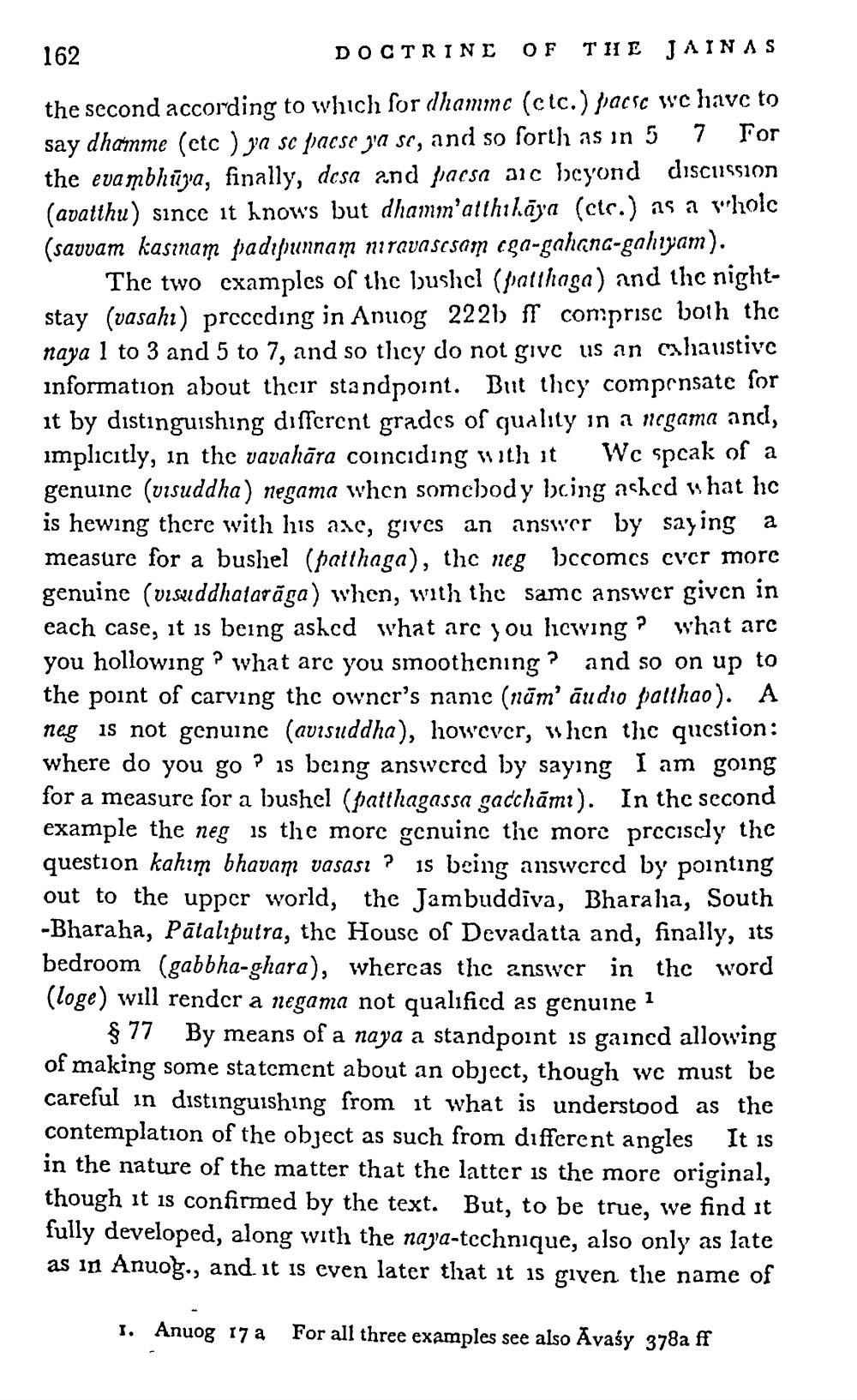________________
162
DOCTRINE OF TIE JAINAS the second according to which for (hammc (ctc.) pacsc wc have to say dhamme (etc ) ya sc pacse ja se, and so forth as in 5 7 For the evambhūra, finally, desa and paesa aic beyond discussion (avatihu) since it hnows but dhamm'atthilāya (etc.) as a wholc (sauvam kasınam padipunnam mravascsam cga-gahang-gahıyam).
The two examples of the bushel (patthaga) and the nightstay (vasahi) preceding in Anuog 2221) ff comiprisc both thc naya 1 to 3 and 5 to 7, and so they do not give us an chaustive information about their standpoint. But they compensate for it by distinguishing different grades of quality in a negama and, implicitly, in the vavahāra coinciding with it Wc speak of a genuine (visuddha) negama when somcbody being asked what hc is hewing there with his axe, gives an answer by saying a measure for a bushel (patthaga), the neg bocomcs cvcr more genuine (visuddhalarāga) when, with the samc answer given in each case, it is being asked what are you hicwing? what are you hollowing ? what are you smoothening? and so on up to the point of carving the owncr's nanie (nām' audio palthao). A neg is not genuine (avisuddha), however, when the question: where do you go ? is being answered by saying I am going for a measure for a bushel (patthagassa gacchāmi). In the second example the neg is the more genuinc the more precisely the question kahım bhavam vasası ? is being answered by pointing out to the upper world, the Jambuddiva, Bharaha, South -Bharaha, Pātaliputra, the House of Devadatta and, finally, its bedroom (gabbha-ghara), whereas the answer in thc word (loge) will render a negama not qualificd as genuine 1
§ 77 By means of a naya a standpoint is gained allowing of making some statement about an object, though we must be careful in distinguishing from it what is understood as the contemplation of the object as such from different angles It is in the nature of the matter that the latter is the more original, though it is confirmed by the text. But, to be true, we find it fully developed, along with the naya-technique, also only as late as in Anuog., and it is even later that it is given the name of
1. Anuog 17a
For all three examples see also Avaśy 378a ff




